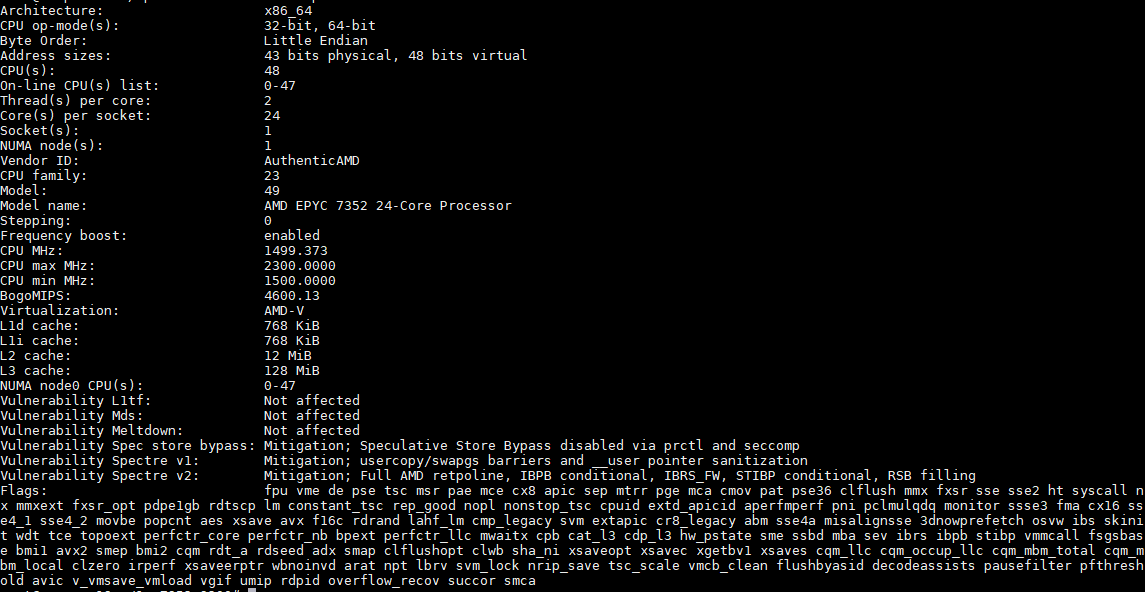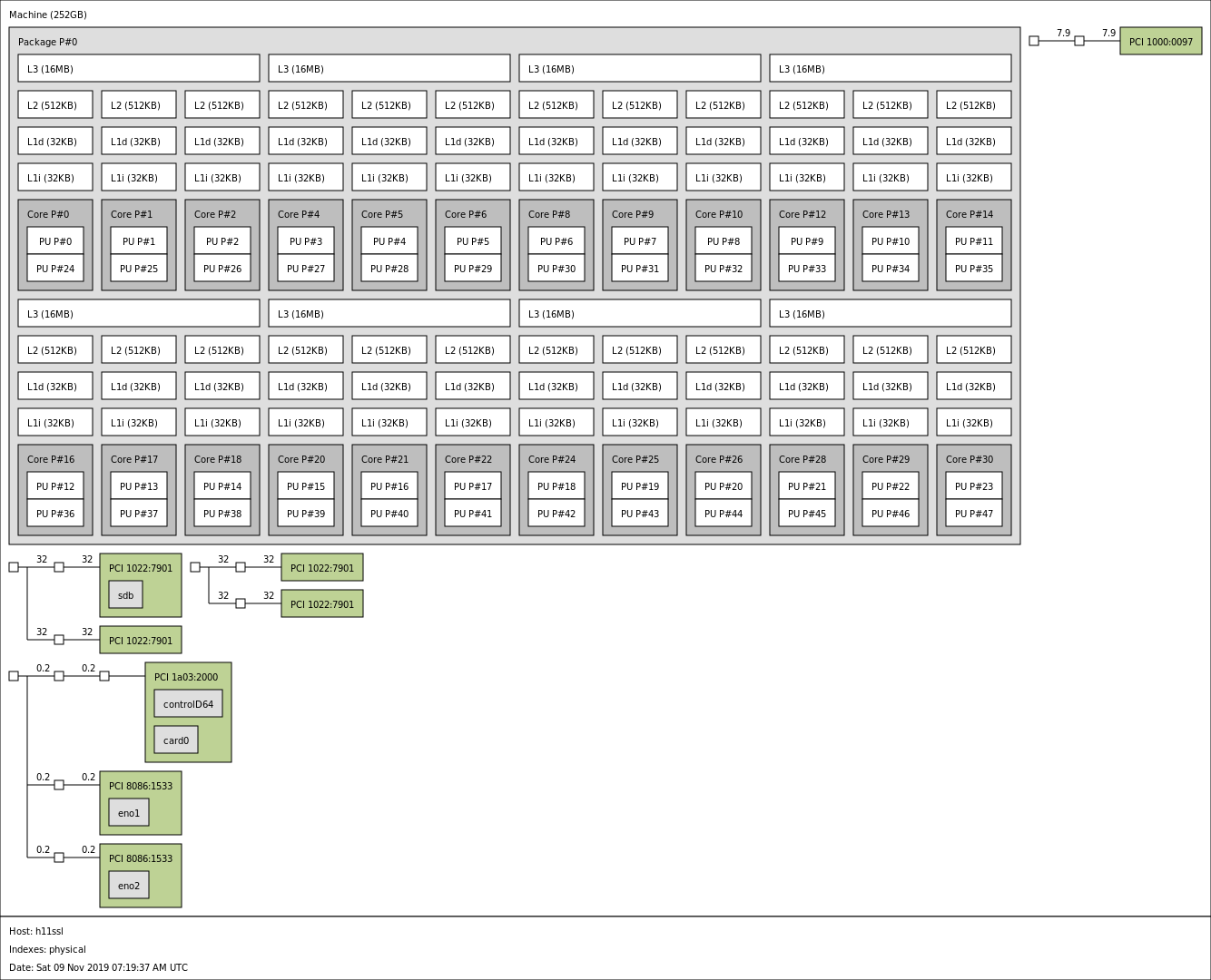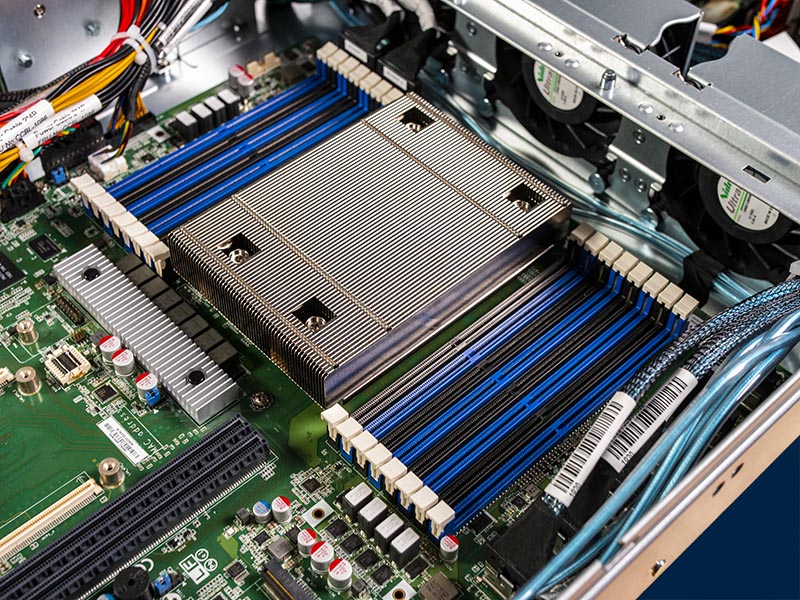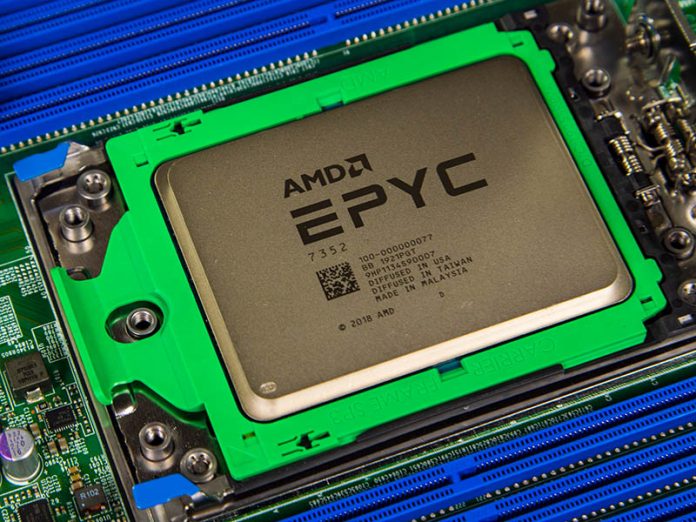The AMD EPYC 7352 offers something new with this generation. In the previous generation, the AMD EPYC 7351(P) was a 16 core CPU with a 735x designation. As the “2” ends the model name as a second-generation AMD EPYC 7002 Series Rome part, the line adds 50% more cores making it one of the most impactful advances in the lineup. The story here is much more than simply cores. Features such as PCIe Gen4, DDR4-3200, as well as an updated architecture are going to send this CPU into heights previously unseen in the segment. With that introduction, it is time to commence our benchmark and review session.
Key stats for the AMD EPYC 7352: 24 cores / 48 threads with a 2.3GHz base clock and 3.2GHz turbo boost. There is 128MB of onboard L3 cache. The CPU features a 155W TDP. These are $1,350 list price parts.
Here is what the lscpu output looks like for an AMD EPYC 7352:

There are a few items we wanted to highlight here. The new lscpu tool shows the status for a few vulnerabilities. One will notice significant deltas between this and what one will see on older hardware, and even some of Intel’s more current offerings due to the differences in architecture.
The second major item is that the chip is now a single NUMA node. Here is what the AMD EPYC 7352 topology looks like in a platform we tested the chip in for a review:

One can see that all 24 cores and 256GB of memory, in this case, are attached to a single NUMA node. Previous generation AMD EPYC 7001 series parts had four NUMA nodes per socket which were probably the biggest source of criticism of that design. With the newest EPYC 7002 series, this is gone. With chips like the AMD EPYC 7702P, you can scale up to 64 cores in a single socket. In contrast, to hit 64 cores with the latest 2nd Generation Intel Xeon Scalable one needs four NUMA nodes. The tables have turned in that regard.
Beyond the cores, the chip has 128MB of L3 cache. That is a huge number. In comparison, a 24-core Intel Xeon Platinum 8268 has less than half of that. One also gets up to 128 lanes of PCIe Gen4. Since this is a standard part, not a “P” series SKU, one can also use these chips in dual-socket configurations. Other platform features include 8 channel DDR4-3200 memory with total capacity up to 4TB per socket.
Test Configuration
For most of our charts (except the dual-socket virtualization testing) we are using the Tyan Transport SX TS65A-B8036.
- Platform: Tyan Transport SX TS65A-B8036
- CPU: AMD EPYC 7352
- RAM: 8x 32GB Micron DDR4-3200 RDIMMs
- OS SSD: 400GB Intel DC S3700
- Data SSD: 960GB Intel Optane 905P
You can read the full review of this platform linked above, but this is a PCIe Gen4 single-socket platform from Tyan that has 16x front U.2 NVMe bays, 10x front SATA/ SAS bays, two rear 2.5″ SATA OS SSD bays, six expansion slots on risers and an OCP mezzanine slot. All this is achieved using a single AMD EPYC 7002 series CPU.

If you count the PCIe lanes and bandwidth in the platform, Tyan is offering more PCIe I/O than a dual-socket Xeon server in a single socket AMD EPYC 7002 server. We were going to use a dual AMD EPYC 7002 series platform for this review, but the single AMD EPYC 7742 is closer to two Xeons and we have an acceptable, at best, quad Xeon 6200/ 8200 data set.
Also, one may read that you cannot use Optane with AMD EPYC. While it is true that you cannot use the Intel Optane DCPMMs with AMD EPYC, you can use their standard NVMe form factor. Intel Optane NVMe SSDs are excellent for database applications as an example when paired with EPYC.
A Word on Power Consumption
We tested these in a number of configurations. Here is what we found using the AMD EPYC 7352 in this configuration when we pushed the sliders all the way to performance mode and a 155W cTDP:
- Idle Power (Performance Mode): 99W
- STH 70% Load: 181W
- STH 100% Load: 203W
- Maximum Observed Power (Performance Mode): 232W
These are good figures and in-line with what we have come to expect from the EPYC 7002 series of processors.
Next, let us look at our performance benchmarks before getting to market positioning and our final words.





Pardon my ignorance. It says “…Since this is a standard part, not a “P” series SKU, one can also use these chips in dual-socket configurations…” and then discusses its performance on a Tyan single-socket motherboard. How?
Hi domih – we only had one CPU to test with. You can use standard parts in single or dual-socket configurations. This is an instance where there is no “P” SKU variant so one would use the standard part for single-socket as well.
We then used single-socket results for comparison points.
Please include the numbers for Threadripper in the future.
Worst results than 7451?..its strange
@Patrick
Thanks for the explanation. I don’t know why but my apparently simple XORing mind thought P = single socket only (correct) and non-P = dual socket only (utterly incorrect). Oops :-)